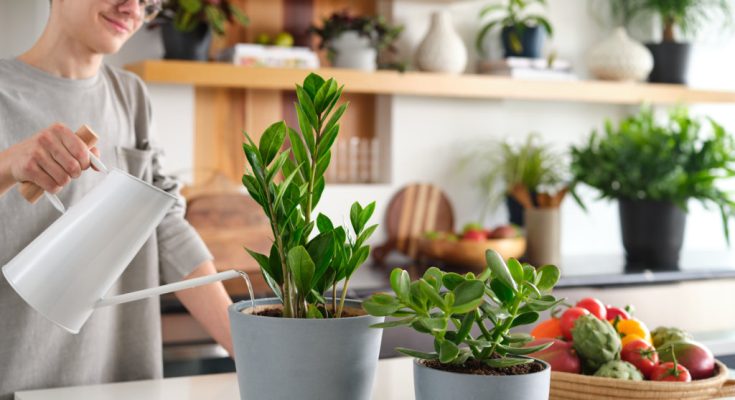With plants taking over our Instagram feeds and the steady signs of spring appearing, you might be thinking about taking the first step toward becoming a plant parent. If you feel overwhelmed by the sheer amount of information and growing gadgets available, we’ve got you. Read on to learn how to cultivate happy, healthy houseplants with just a few essentials.
At Bloomscape, we’re on a mission to let everyone know that indoor plant care is fun, easy, and incredibly rewarding. Plants not only bring beauty into your home, they also purify the air and increase oxygen levels. What’s more, just being near plants has been proven to boost your mood and increase your levels of productivity and creativity.
To succeed with plant care, it’s important to have a few critical tools. Fortunately, some of the bare basics that are essential for houseplant happiness are built-in to your home: a climate-controlled environment, water, and windows to let in the natural light. Learn more about temperature, watering, and light in our A-Z Plant Care Guides.
Let’s review the things you’ll need to acquire to begin your houseplant journey.
The Perfect Plant
First, let’s start with the obvious—you need a plant! The most fun part of becoming a new plant parent is shopping for your first leafy friend. We’ve taken the stress out of this decision with our collection of starter plants that boast affordability and easy care, all shipped directly from our greenhouse to your door.
Pothos
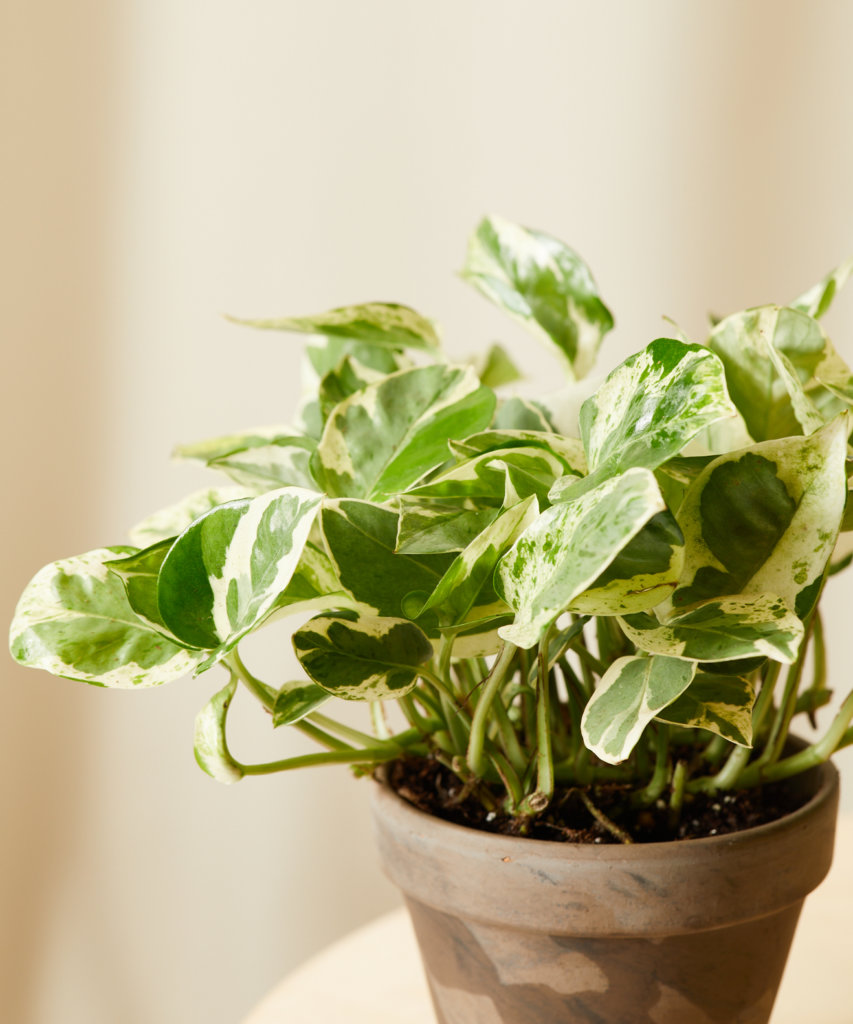
Thriving in most light levels (just avoid direct sunlight all day long), Pothos is a tropical plant that adds lush leafiness to your space thanks to its trailing vines and heart-shaped leaves. We love to place ours on a bookshelf or mantle where the stems are free to roam as they grow. Thanks to its fast-growing nature, this is one of the easiest plants to propagate. Plant propagation is a way to create new plants from the stems of existing plants. Simply snip off a section of pothos vine, place the cut end in water, and wait a month or two for roots to form before you move it into its own pot and soil.
Ponytail Palm
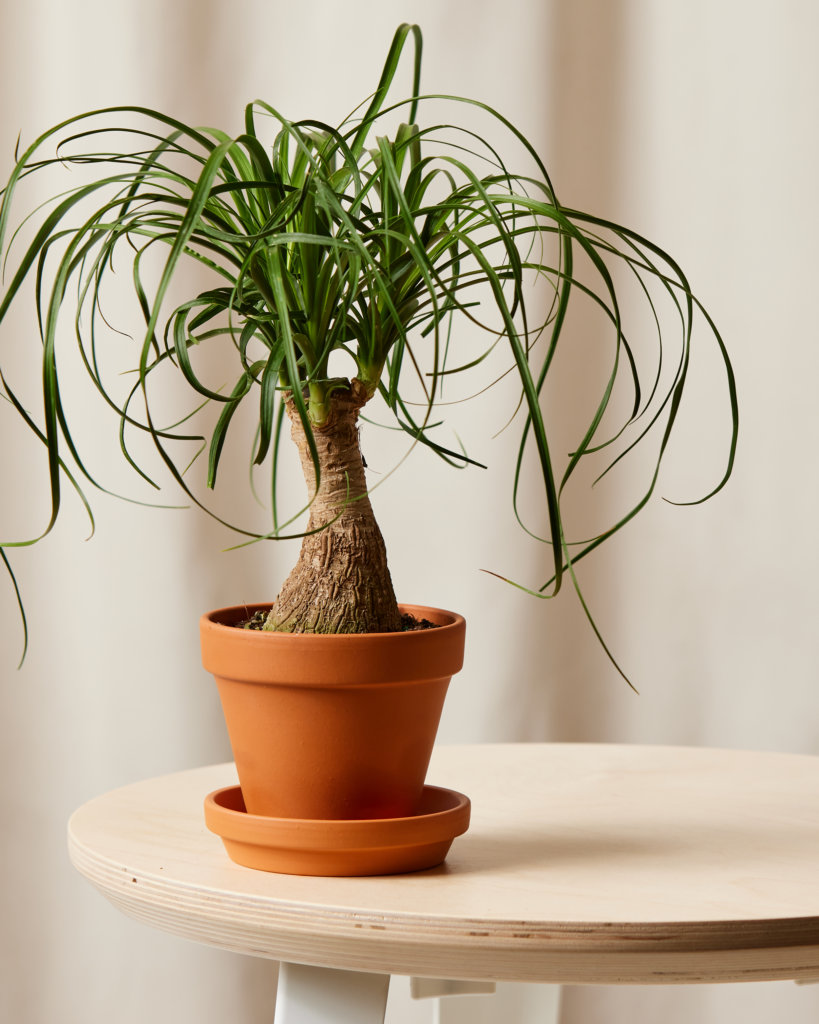
The unique Ponytail Palm features a broad, bulbous base with long, arching leaves growing off the top that resemble ponytails. Not actually a palm, this plant is a type of succulent and enjoys growing in direct sunlight. Its broad trunk serves to store excess water, making it extremely drought tolerant. In fact, it prefers its soil to dry out completely between waterings. Reaching over 15’ tall in its native environment, this plant is relatively slow growing and won’t outgrow your space anytime soon!
Snake Plant
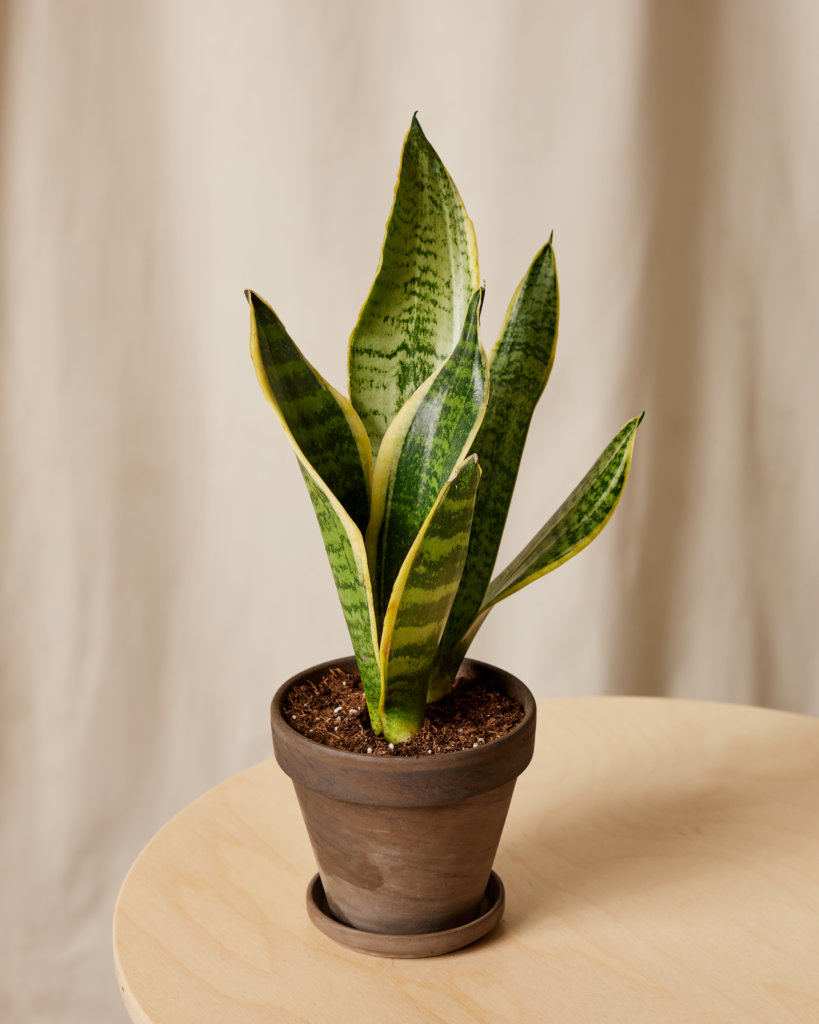
The Snake Plant, or sansevieria, is famous for its upright leaves and adaptability to every type of indoor environment. While it prefers bright indirect or direct sunlight, it can adapt to the lowest-light corners of your room, where it will maintain its size and color better than any other houseplant available. Take care not to overwater your Snake Plant—if it’s in low light, you don’t need to water it more than once every 4-6 weeks (really!). In higher light, it’s best to water once every 2-4 weeks. Just check the soil and be sure it is dry all the way through before adding any water.
Air Plants
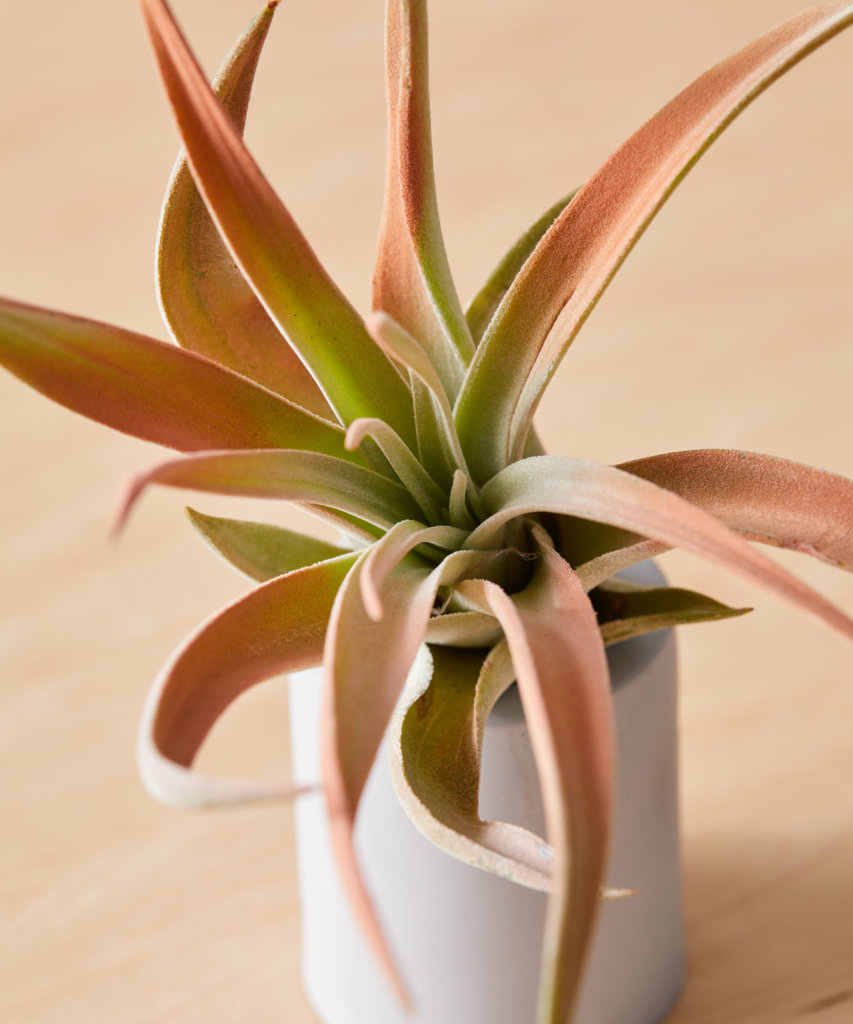
Did you know that you can grow indoor plants without any soil required? Air Plants are a type of epiphytic plant, which means they evolved to grow on the surface of other plants. This unique adaptation allows them to gather water and nutrients through the surface of their leaves. Options to display them are almost endless—you can purchase an air plant holder, or you can place your plant atop a stack of books, on a shelf, or in a pretty vase. Simply choose a spot with bright indirect light, and soak-water it once every 2-4 weeks.
For most houseplants, don’t forget potting soil and a pot with a drainage hole—items that are both included with Bloomscape plants. In fact, we do the hard work for you, and you won’t need to worry about repotting your plant for months to come!
The Grow-How®
Next up: Once you’ve chosen your perfect houseplant, it’s time to arm yourself with information. Plants from Bloomscape arrive with a care card that outlines everything you’ll need to know, and we also provide plenty of Grow-How® tips and tricks on our website.
Plant Care Guides
Each type of houseplant is a unique species that evolved to have different care needs. This just means that you should do some quick research to see what light, moisture, and other care preferences your plant has. Whether you’re growing a Monstera, ZZ Plant, or something else entirely, we make that information easy to find in our A-Z Care Guides.
Plant Care Blogs
Once you’re comfortable with the basics, our plant care blogs offer a peek into slightly more advanced plant care techniques. Don’t worry, you don’t need these to succeed—but we can almost guarantee you’ll be ready to dig in in no time. Some of our most-frequented blogs include our tips on lighting, watering, and fertilizing.
Grow-How® Team
Did you know that Bloomscape has a team of plant experts with the sole purpose of helping customers develop their green thumb? With accredited horticulturists and decades of combined experience, our Grow-How Team is ready to answer any question you have about plant care (for free!). Drop us a line!
The Tools Of The Trade
Once you’ve selected your plant and armed yourself with information, don’t forget to add a few essential care supplies to your shopping cart. Below are the three must-haves that we recommend for everyone at the beginning of their journey.
Watering Can
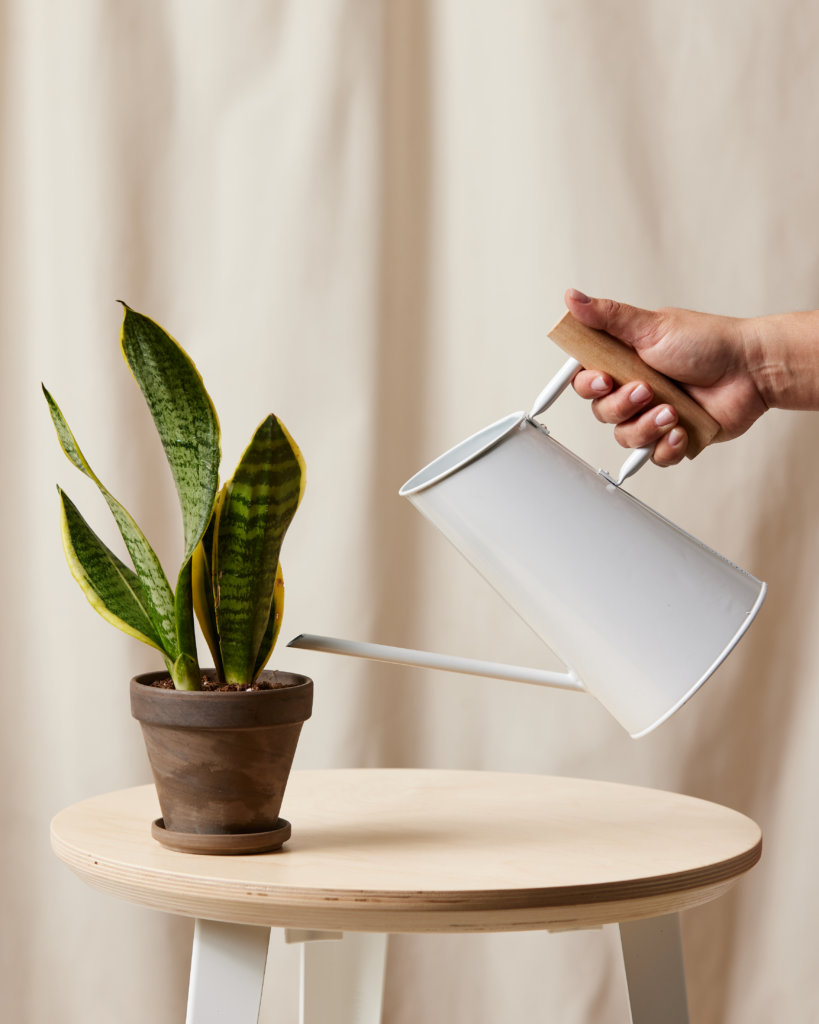
While you can certainly water your plants with a drinking glass or straight from the tap, we think it’s worth the small investment to pick up a Watering Can. Keeping a watering can at the ready means you’ll be more likely to water your plant right when it needs it. The long, narrow spout allows you to control the amount of water, meaning you’ll be watering the soil rather than sloshing it onto your furniture or floor.
Fertilizer
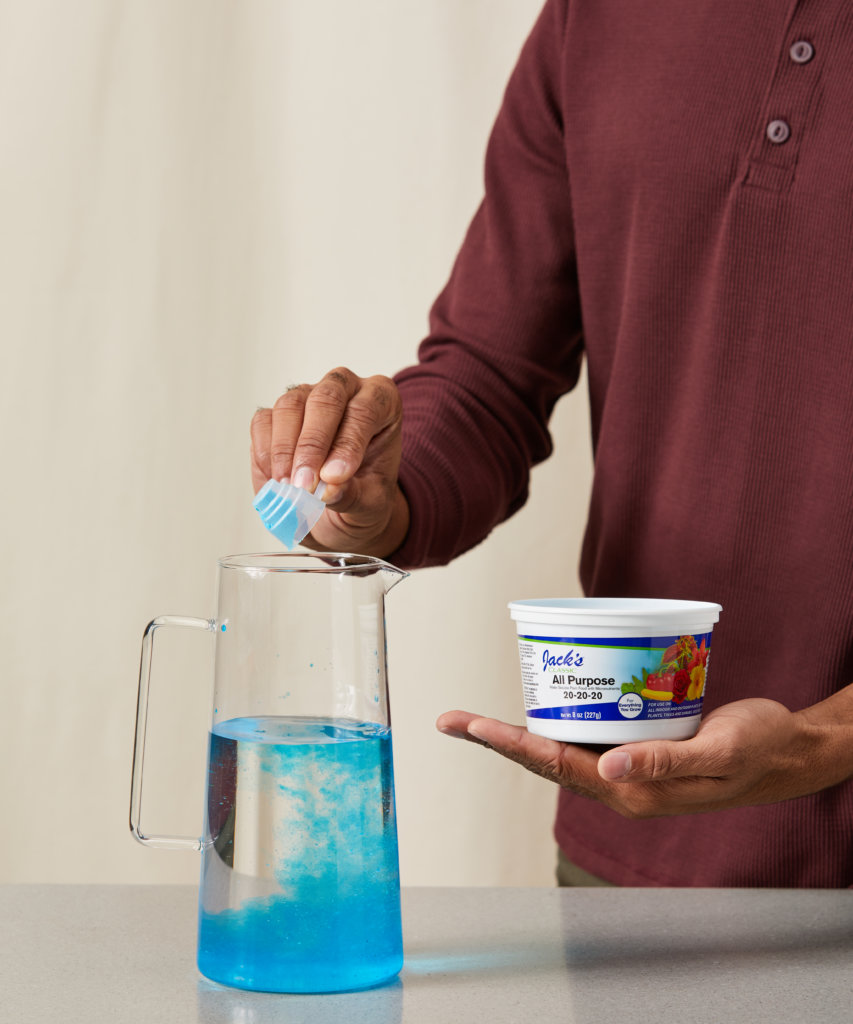
In our experience of helping people succeed with plants, fertilizer is the most under-utilized item. Regular rounds of fertilizing are essential for sustainable plant growth and health. We go into lots of detail in our fertilizing guide, but it boils down to this: plants require nutrients to live, and the limited space of a plant pot is quickly depleted of nutrients when a plant is growing. Your plant is depending on you to replenish its food in the form of fertilizer! Avoid under-feeding by grabbing some All-Purpose Fertilizer when you buy your first plant.
Cutting Tool
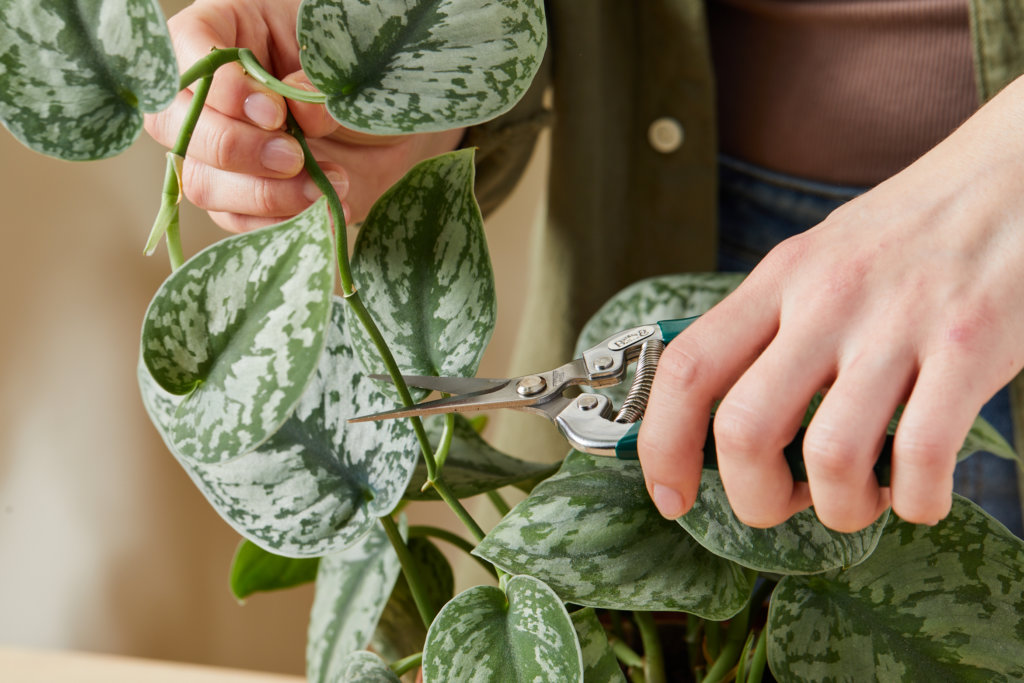
When a leaf or stem inevitably breaks or starts to yellow, you’ll be thankful to have a proper cutting tool on hand. You could use regular household scissors, but because they’re used for a variety of materials, they tend to be dull. It’s best to use a sharp horticultural cutting tool that makes a clean cut, which means your plant will heal faster.
- For most houseplants, Plant Snips will be the cutting tool of choice. They offer a balance of cutting strength with precision, and are ideal for the Pothos, Ponytail Palm, Snake Plant, and Air Plants we’ve recommended above.
- If you’ve opted for a larger tree-type plant like a Burgundy Rubber Tree or Fiddle-Leaf Fig, you might want to consider Plant Pruners. These are well-suited to larger plants and can cut through thick stems with ease.
- Another option is Pruning Scissors. For plants that need regular shearing and shaping like lemon cypress, or if you plan on harvesting flowers or herbs, scissors allow you to cut many stems at once with precision.
Now that you know the basics, what are you waiting for? Pick up your plant essentials today, and remember that the Grow-How Team is here to help if you have any questions. You got this!
